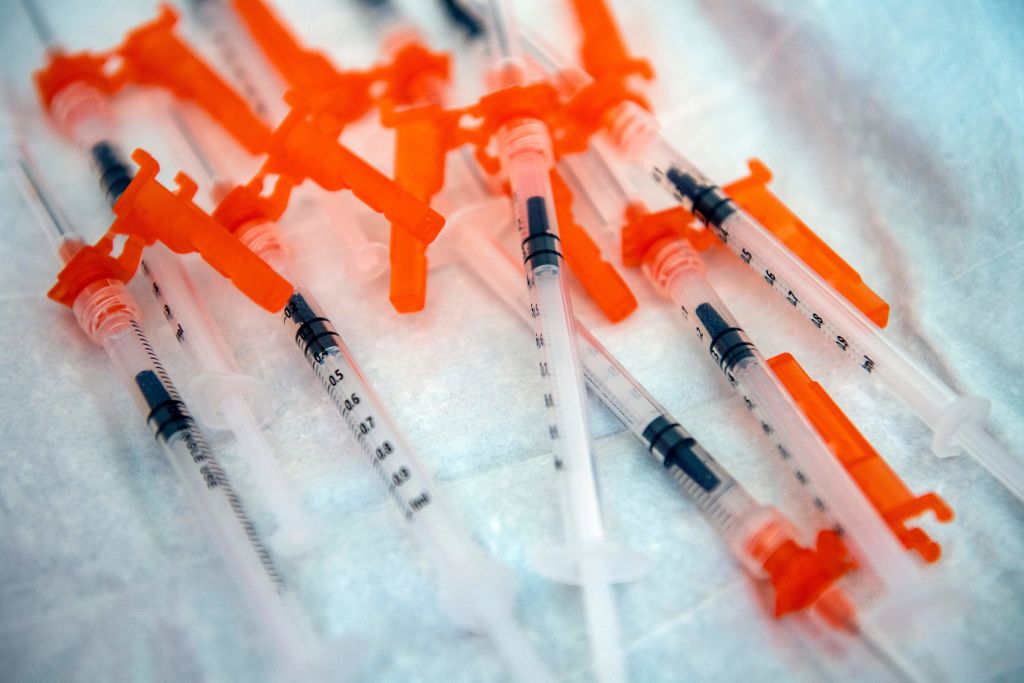
In an Apr. 19 meeting, the vaccine committee of the U.S. Centers for Disease Control and Prevention (CDC) recommended that people ages 65 and older get a second bivalent mRNA booster. The panel also recommended additional boosters for people with weakened immune systems.
As a result of the new recommendations, the bivalent booster, which targets both the original and Omicron BA.4/5 viruses, also becomes the only mRNA COVID-19 vaccine available in the U.S., replacing the original shots that targeted only the original SARS-CoV-2 virus and were used to immunize people with their primary series of shots.
The updated guidelines are part of the CDC’s effort to streamline a confusing COVID-19 vaccine regimen. Currently, it includes different formulations of mRNA vaccines from both Pfizer-BioNTech and Moderna. Under the latest guidelines, these will now all target the same viral strain, differing only by dosage for different age groups.
Annual COVID-19 boosters
The committee also supported simplifying the currently complicated vaccination timelines for most healthy Americans ages six and older with a booster once a year, similar to the annual flu shot. That means that most people’s next COVID-19 shot—likely a bivalent shot—would probably come in the fall.
The U.S. Food and Drug Administration (FDA)’s vaccine committee will meet in June to decide which strain or strains should be included in that shot. While the specific formulation of the vaccine may change, it’s not likely that the simplified dosing schedule will change.
The panel also allowed for some flexibility in the timing and frequency of the bivalent booster dose, especially for young children, older people, and people with weakened immune systems. For all of these groups, the committee supported giving doctors discretion in deciding whether additional doses—beyond the single booster recommended for most healthy people—should be used.
Changes for kids
The schedule remains slightly more complicated for younger children, since the two mRNA vaccine brands have varying doses based on age groups. For healthy children ages six months to four years, the committee’s updated recommendations advise at least two total doses, with at least one of them being a bivalent shot. Until now, children in this age group got two shots of Moderna’s original vaccine and a bivalent booster, while kids getting Pfizer-BioNTech received either two or three shots of the original, depending on their age, and a bivalent booster. Now, regardless of where they are in their primary vaccination series, the new recommendations could mean getting fewer total doses.
For five year olds, the recommendations are slightly different, since Pfizer-BioNTech and Moderna used different age cutoffs for their studies. Five year olds getting Moderna shots now need at least two doses, with a least one of them being a bivalent shot. Five year olds getting Pfizer-BioNTech vaccine only need one dose of the bivalent shot. (To make the changes easier to understand, the CDC says it will publish charts on its website for parents and doctors detailing the new vaccination regimen for all young children.)
These recommendations will remain in place until FDA and CDC experts meet again in June.
More Must-Reads from TIME
- How Donald Trump Won
- The Best Inventions of 2024
- Why Sleep Is the Key to Living Longer
- Robert Zemeckis Just Wants to Move You
- How to Break 8 Toxic Communication Habits
- Nicola Coughlan Bet on Herself—And Won
- Why Vinegar Is So Good for You
- Meet TIME's Newest Class of Next Generation Leaders
Contact us at letters@time.com